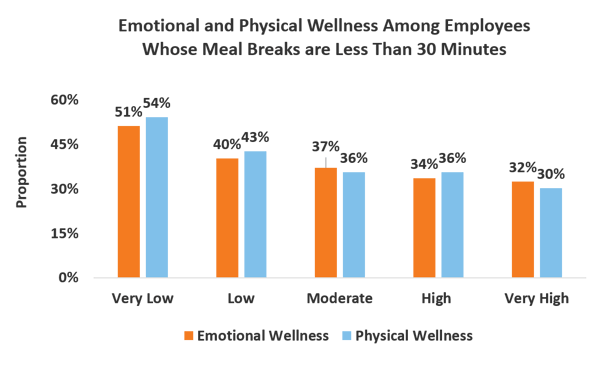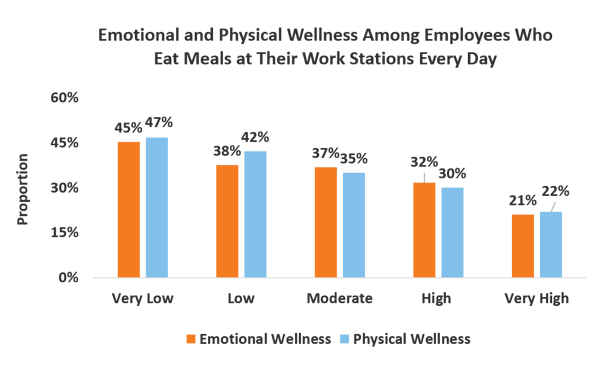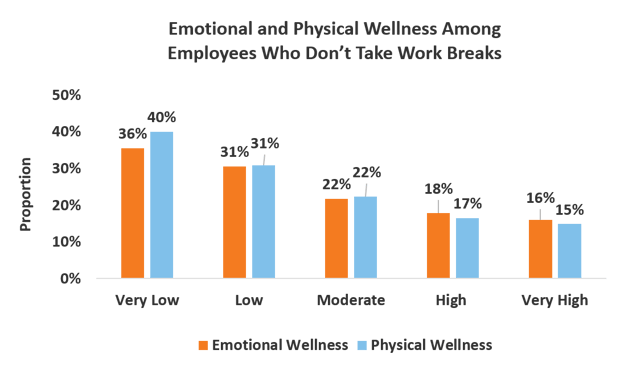
 When you think about employee wellness, work breaks probably aren't the first thing that comes to mind. You might think about health fairs, blood pressure, dieting, and weight loss. Maybe even meditation and yoga.
When you think about employee wellness, work breaks probably aren't the first thing that comes to mind. You might think about health fairs, blood pressure, dieting, and weight loss. Maybe even meditation and yoga.
But what do breaks at work have to do with employee wellbeing?
Our latest employee wellness research uncovered some interesting results about work breaks. Keep reading to learn what we found.
When asked about breaks at work:

More than half of employees who have very low wellness have meal breaks that are less than 30 minutes. Less than a third of employees who have very high wellness have similar meal breaks.
 Almost half of employees who have very low wellness eat their meals at their workstations every day. Less than a quarter of employees who have very high wellness eat at their workstations at the same frequency.
Almost half of employees who have very low wellness eat their meals at their workstations every day. Less than a quarter of employees who have very high wellness eat at their workstations at the same frequency.
 More than a third of employees who have very low wellness also don’t take any work breaks. Less than one-fifth of employees who have very high wellness also don’t take any work breaks.
More than a third of employees who have very low wellness also don’t take any work breaks. Less than one-fifth of employees who have very high wellness also don’t take any work breaks.
The results in this section can be summarized as follows: employees likely have lower wellness if they have short meal breaks, eat meals at their workstations every day, or don’t take breaks at work.
We also asked respondents to indicate which type of work breaks they take most often (excluding restroom and meal breaks). These four types accounted for 74% of all work breaks that employees take most often:
Breaks at work tend to have a bad image. Employers often view them as an excuse for employees to waste valuable time, be unproductive, or interrupt coworkers. But our research supports the idea that work breaks should instead be embraced as part of employee wellness.
Other studies are beginning to show their importance:
Leadership and management should understand that breaks have the potential to be beneficial if they’re managed well.
Employees are less likely to take breaks if they’re overworked, think they’re always on the clock, or believe they’ll be punished if caught taking a break.
These can be big (such as quiet rooms or game rooms) or small (such as soundproof headphones or board games in the kitchen).
Work breaks are one easy way to overcome barriers to employee wellness at work. To learn about other ways to reinforce employee wellbeing, download our ebook: Overcoming Barriers to Employee Wellness and Engagement.
Published September 10, 2019 | Written By Dan Harris, Ph.D.